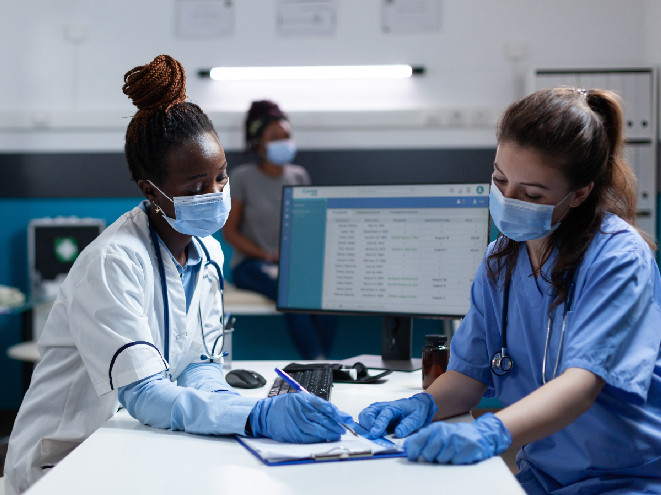Impetigo is a skin infection most common in younger children. Bacteria, including Staphylococcus aureus (S. aureus or “staph”) and Group A streptococcus (“strep”) can cause the infection, which can lead to itchy sores and blisters. Treatment is quick and includes an antibiotic.
Impetigo
Impetigo is an itchy skin infection. It can be painful. It usually occurs when a child gets a bite, scratch or other wound that opens the skin and bacteria enters. However, impetigo can occur even if the skin is not broken or open. It typically occurs more often in the warmer months. The first signs of impetigo can include sores and blisters on the mouth and nose. If you think you or your child has impetigo, the doctors at CheckPoint Urgent Care can get you back to normal quickly.
Types of Impetigo
The three types of impetigo are bullous, non-bullous, and ecthyma.
Bullous impetigo is a rarer type of skin infection. It’s more common in young infants- more than 90% of cases are in children under 2. The stages of bullous impetigo include-
- Large, fluid-filled blisters form on the skin, but the skin surrounding does not appear red
- The blisters become clear and break open
- Crusty sores form, and the skin heals without scarring
Non-bullous impetigo is early-stage impetigo and is the most common type. The stages of non-bullous impetigo include:
- Developing one or more sores that itch and quickly burst
- Raw or red skin where sores have formed and broken open
- Swollen glands near the sores
- Forming gold-colored crusts over the sores, but the skin heals without scarring
Untreated impetigo can lead to ecthyma. It’s a more serious type of infection as it goes deeper into the layers of the skin. Stages include:
- Painful blisters that turn into deep, open sores
- A thick crust appears on the skin, with redness around the surrounding skin
- As the skin heals, scars can form as the infection goes deep into the skin
Symptoms of Impetigo
Typically symptoms start within three days of the bacteria entering the skin. Impetigo on the face usually starts around the mouth and nose. However, impetigo can also develop on the hairline and scalp.
Impetigo includes blisters, rashes, and other skin wounds, or lesions. Impetigo can be characterized by the following traits:
- Blisters that may be pus-filled and burst easily. Fluid may be yellow or tan and may form crusts as it seeps out
- Impetigo rash can cause red, raw skin
- Lesions that appear on the nose, mouth, lips, ears, arms, and legs can spread to other parts of the body
- Swollen lymph nodes
Treatment of Impetigo
Impetigo treatment includes antibiotics. These may be topical antibiotics and applied directly on the skin. You may also be prescribed an oral antibiotic if the impetigo is affecting a large area of skin or spreads to multiple body parts. The sooner you can receive treatment, the better. Antibiotic creams can help the infection go away faster and may help stop the infection from spreading. Currently, no over-the-counter medications treat impetigo, but some creams with bacitracin may provide relief if the infection has not spread.
How to Prevent Impetigo
Impetigo is highly contagious. Most people get it through direct skin-to-skin contact. It can be contracted by coming into direct contact with sores, mucus or nasal discharge by someone already infected. Children and athletes usually pass it to one another this way.
The best ways to prevent impetigo include:
- Keeping hands clean
- Practice good hygiene, including trimming fingernails, sneezing and coughing into a tissue, and bathing regularly
- Avoid scratching, as breaking skin open allows for bacteria to enter
- Clean wounds with soap and water, and treat with antibiotic ointments
- Keep linens clean and wash them and underwear in hot water
Relief from Impetigo at CheckPoint Urgent Care
If you think your child has developed an impetigo infection, the team at CheckPoint Urgent Care can get you the antibiotics you need quickly to treat and stop the infection from spreading. Visit our website to find a location near you today.








